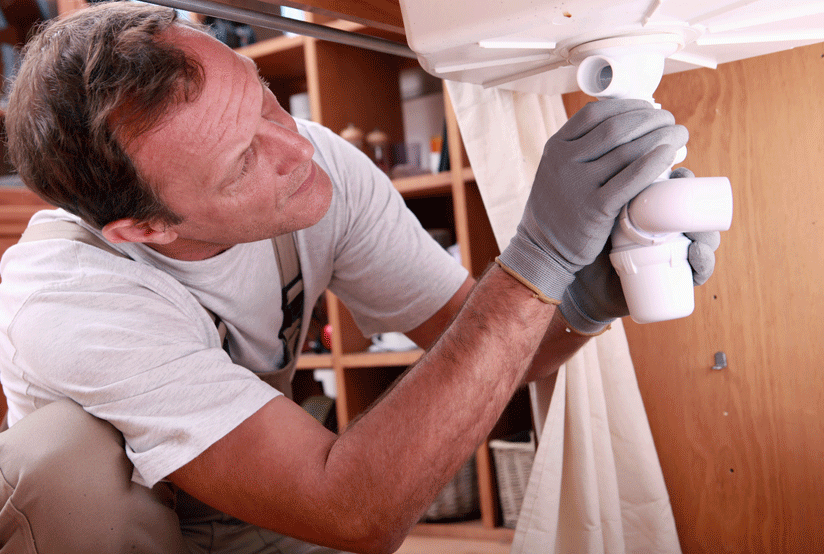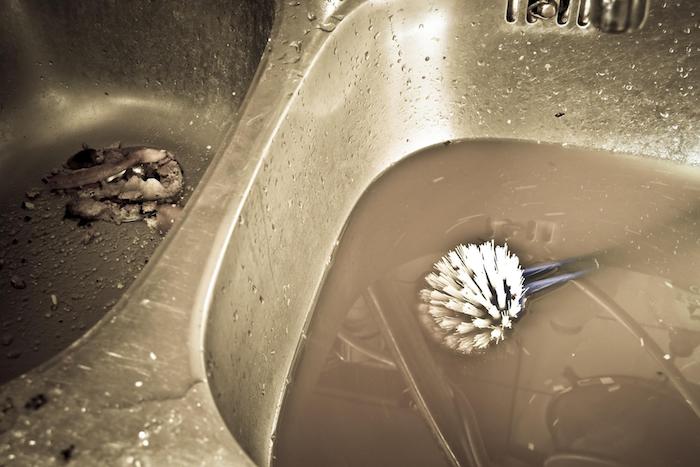Straightforward Fixes For A Slow-Draining Sink
Straightforward Fixes For A Slow-Draining Sink
Blog Article
Do you find yourself trying to find info concerning How to Fix a Slow Draining Sink?

Introduction
We have actually all been there: You're cleaning your teeth or cleaning your hands, and you see the water merging in the sink. As opposed to swiftly swirling down the drain, it sticks around, turning your once-refreshing early morning routine into a small swamp scene. A slow-draining sink isn't simply aggravating; it's typically an indicator of bigger pipes concerns lurking underneath the surface. The bright side is that most slow-draining sinks can be fixed with a little expertise, a few fundamental tools, and some persistence. Ready to tackle this job head-on? Let's roll up our sleeves and dive right in.
Understanding the Reasons For a Slow-Draining Sink
Prior to you start poking around in your pipes, it helps to recognize what may be triggering the slowdown. Comprehending the origin makes it much easier to choose the ideal solution.
Tools and Products You'll Need
The right tools make all the distinction. The good news is, you won't require a completely stocked plumbing professional's van to finish the job.
Step-by-Step Overview to Repairing a Slow-Draining Sink
Currently, let's get involved in the nitty-gritty. This step-by-step procedure will certainly direct you via easy methods to recover your sink's drain.
Action 1: Remove and Tidy the Stopper
Frequently, the stopper (that little plug you lower to obstruct water) is the first perpetrator. Remove it thoroughly and wipe any type of hair or crud trapped around its base. Wash it thoroughly before putting it back in position.
Action 2: Make Use Of a Bettor to Dislodge Debris
Got that plunger prepared? Setting it over the drainpipe and offer it a couple of company pumps. The concept is to produce suction that can loosen any kind of clog. If you see littles debris floating up, you get on the best track.
Step 3: Try a Drainpipe Snake or Cable Hanger
If the plunger does not do the trick, it's time to highlight the drainpipe snake. Gently feed it into the drainpipe and twist as you go. You might really feel some resistance-- that's likely the obstruction. Keep turning and drawing until you remove the blockage. If you don't have a drainpipe serpent, a corrected wire wall mount can operate in a pinch.
Step 4: Use a Do It Yourself Drain Cleanser
An all-natural cleaner made from baking soft drink and vinegar can break down recurring grime. Pour half a mug of cooking soft drink into the drain, complied with by half a mug of vinegar. Allow it fizz for around 15 minutes, after that flush with hot water. This chemical reaction commonly does marvels for small clogs.
Step 5: Reconstruct and Test the Sink
Put every little thing back together and run the tap. Does the water now swirl down the tubes at a respectable speed? If yes, provide yourself a pat on the back. Otherwise, do not despair-- there are still a few even more tricks up your sleeve.
Necessary Tools for DIY Repairs
A bettor is your best beginning factor. A little, sink-sized plunger develops suction that can remove small obstructions. For more persistent obstructions, a drainpipe snake (in some cases called a plumbing professional's auger) works marvels. A pair of gloves, a flashlight, and maybe a pair of protective goggles are likewise handy.
Recommended Cleaning Solutions
Mild meal soap and warm water can aid break down oily accumulation. A mix of cooking soda and vinegar is a tried and true home remedy, and chemical cleaners supply an even more green technique. Maintain chemical drainpipe cleaners as a last option, as they can be severe on your pipelines.
Common Culprits Behind Slow Drain
So, what's obstructing things up? Commonly, it's a mixture of everyday debris-- believe hair, soap residue, toothpaste residue, and leftover food bits. Over time, these tiny bits build up and cling to the pipe walls, gradually narrowing the passage and making it harder for water to pass through. In many cases, natural resource from difficult water can also add to the substance, producing the excellent tornado for persistent clogs.
When is it Time to Do Something About It?
If you observe the water draining pipes slower than typical, it's a great concept to step in sooner as opposed to later. Waiting also long can result in finish clogs, undesirable smells, or perhaps pipe damage. If the water takes more than a few secs to clear out after turning off the faucet, consider it a red flag and prepare yourself to put on your do it yourself hat.
Security First: Precautions and Prep work
Before you launch into unclogging mode, think of safety. You're taking care of potentially unclean water and particles, so slip on a set of handwear covers. If you're making use of chemical cleaners, ensure the area is well-ventilated and adhere to the guidelines on the tag.
Protective Gear and Workspace Arrangement
Put down some old towels or rags around the sink location to catch dashes. Clear away any products that may enter your method, like soap dispensers or toothbrush owners. See to it you have great lighting-- order a flashlight if needed.
Alternative Approaches for Stubborn Clogs
Not all clogs are produced equal. If your sink still refuses to coordinate, think about these different solutions.
Baking Soda and Vinegar Approach
We currently touched on this, but it's worth keeping in mind again. This gentle, eco-friendly method is safer than chemical cleansers and often quite efficient.
Chemical Drain Cleansers
Enzyme-based cleaners use natural microorganisms to absorb raw material. They're an excellent choice if you're wanting to avoid harsh chemicals. Simply bear in mind, they may take a bit longer to function their magic.
Chemical Drain Cleaners: Benefits And Drawbacks
Chemical cleansers can blow up with hard obstructions quick, yet they're not without disadvantages. They can produce warmth and fumes, damage pipes if made use of excessively, and posture ecological threats. Use them moderately, and always adhere to the directions meticulously.
Preventive Measures to Maintain Your Sink Flowing
Prevention is the very best cure. By embracing a couple of simple practices, you can maintain your sink from reducing in the first place.
Routine Cleaning Up Routines
Clean down the sink container and fixture area routinely. Remove hair or food particles prior to they have an opportunity to wash down the drain.
Preventing Harmful Materials Away
Think twice prior to dumping coffee grounds, oil, or coarse vegetable scraps down the sink. These wrongdoers hold on to pipe walls, creating clogs gradually.
Routine Upkeep Checks
Arrange a fast monthly examination. Run hot water through the sink for a few mins, taking notice of the flow. If it seems slow-moving, act fast prior to it becomes a full-on blockage.
When to Call a Specialist Plumbing Professional
In some cases, despite how hard you attempt, that obstruct simply will not move. That's when it's time to bring in the pros.
Signs That Suggest an Extra Severe Concern
If your sink drains gradually regardless of several attempts, or if you observe water backing up in various other fixtures (like your shower or commode), you might have a more major plumbing issue hiding much deeper in the system.
Balancing DIY Initiatives with Expert Assistance
While do it yourself can save you cash and provide a feeling of accomplishment, there's no embarassment in calling a professional. A specialist plumber can assess your whole pipes configuration, making sure there's no underlying damage or long-term trouble that could cost you a lot more down the road.
Contrasting Costs and Long-Term Solutions
Before choosing, consider the big picture. A low-cost, quick fix may fix the issue temporarily, yet purchasing a more permanent remedy could conserve you money and anxiety in the long run.
Evaluating the Costs of DIY vs. Professional Fixes
DIY solutions often set you back bit more than the cost of a bettor or a bottle of baking soda. Professional solutions, on the other hand, come with a cost but may stop repetitive concerns and expensive repair work later.
Investing in Top Quality Fixtures and Upgrades
If your sink's layout contributes to frequent blockages, it might be worth upgrading to higher-quality fixtures or altering the plumbing layout. Consider this a financial investment in your house's capability and comfort.
Final thought
A slow-draining sink can seem like a minor inflammation, but it's frequently an indication that your plumbing needs a little tender loving care. By understanding the origin, using the right devices and strategies, and devoting to basic preventive measures, you can maintain your sink streaming easily. And when all else fails, never ever be reluctant to call in an expert-- your home's plumbing is worth the investment in treatment and maintenance.
Three Common Ways to Fix a Slow Drain
Baking Soda Method
Boil a full pot of water. Measure out cup of baking soda and pour it down the drain. Then take cup of the magical cleansing substance known as white vinegar and drop that down there too. Allow the mixture to fizz in the drain for five minutes as the vinegar and baking soda combine. Now dump in that whole pot of boiling water. This combination of cleaning substances should clear out anything that is causing your sink to drain slowly. If it doesn t...
Zip-It
If the baking soda method doesn t clear out your drain, it may be because a significant amount of hair and/or other debris has collected there and you need to remove it. Purchase a Zip-It tool at any home improvement or hardware store and insert it into your drain. It will catch any collected hair or debris that s blocking the flow of water. Pull it out. If it s got a big clump of hair, etc. on the end, you ve probably got your culprit.
Drain Cleaner
If these methods don t work, there is the standard drain cleaner that you can also buy in a hardware store or even your local grocery store. It s better if you can use a household solution, but these drain cleaners often work in a pinch. They re very simple to use. You generally just dump them in your drain and wait. If even this method is not effective, it may be time to call the plumber.
https://www.mrrooter.com/oneida/about-us/blog/2017/july/three-common-ways-to-fix-a-slow-drain/

Do you enjoy reading about 7 Ways To Fix A Slow-Draining Sink Before You Call A Plumber? Make a short review further down. We will be pleased to see your thoughts about this blog posting. Hoping to see you back again later on. Those who enjoyed our blog post if you please do not forget to share it. I value your readership.
Book Report this page